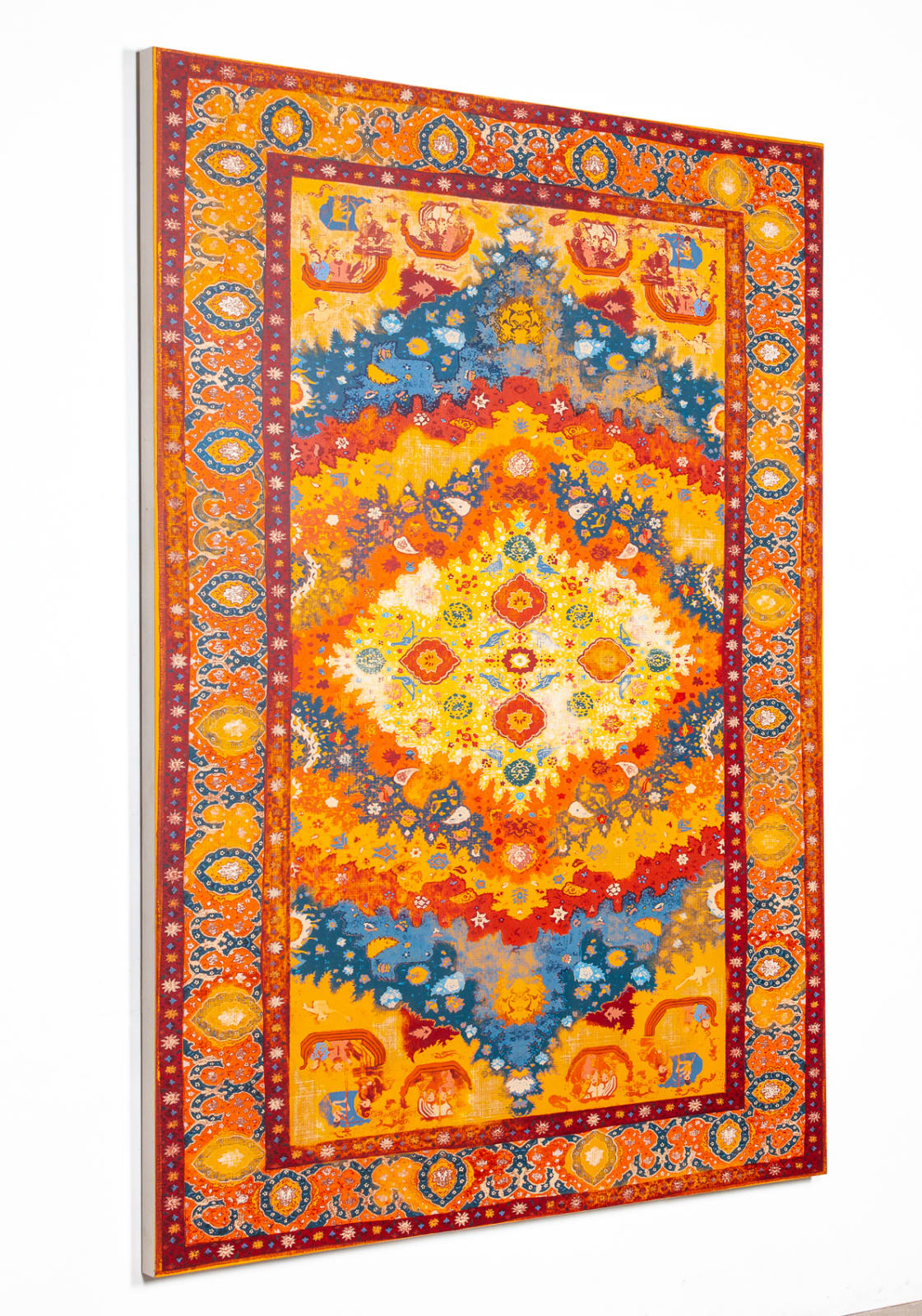-
Kour Pour UK, b. 1987
Fresh Off the Boat, 2021Acrylic on canvas over panel96 x 72 x 1.5 in
243.8 x 182.9 x 3.8 cm8241Fresh Off the Boat belongs to Kour Pour’s series of Persian Carpet paintings, which addresses issues of intercultural representation. The painting is based on a 17th century Persian carpet depicting...Fresh Off the Boat belongs to Kour Pour’s series of Persian Carpet paintings, which addresses issues of intercultural representation. The painting is based on a 17th century Persian carpet depicting Portuguese sailors, common trading partners with the people who designed the original carpet. Although Europeans of the era preferred a toned down, neutral color palette for their Persian carpets, Pour has gone the other way and made the palette more vibrant and colorful. The phrase “fresh off the boat” signifies both the sailors in the image, while also invoking a common phrase describing recently arrived immigrants. Born in the United Kingdom to an Iranian father and British mother, Pour says the most common question he has been asked throughout his life is, “Where are you from?” He always answers with the name of the town where he grew up, but what people are really inquiring about is his bi-cultural heritage. In part an effort to overcome his resentment of this attempt by the majoritarian culture to other him, and in part out of sheer curiosity, Pour now asks the same question about all kinds of things, especially art. If everything is influenced by something else, and culture and information flow freely around the world, how can we declare with certainty where anything is from? Pour’s father, who left Iran at age 14 during the revolution, owned a small carpet shop in Exeter, and Pour would spend time there as a child. He learned that the history of Persian carpets encapsulates the history of the entire world, with visual influences from China, India, Japan, Korea, and Russia, and methods and materials influenced by cultural exchanges with Europe. To make his ambitious Persian Carpet paintings, Pour first researches source images in search of iconic Persian carpet designs dating back centuries, examples with deep intercultural legacies. He photographs the rugs, makes modifications to the image, and then burns the new image onto a screen print to transfer later onto the surface of his painting. Before he makes the transfer, he prepares the surface with multiple interlocking layers of gesso, applied vertically and then horizontally with a push broom. This creates a surface reminiscent of the woven pattern that would be found on a traditional carpet. The screen print is then transferred, and Pour hand paints additional layers, finally using an electric sander to erase sections of the image. The process itself speaks to the most important part of this work—the intercultural nurturing of images, materials, and techniques across time and space.



